The transition of power from a female monarch to a male monarch brought about serious changes in the art and fashion of England during the 1900s. The period of King Edward VII's rule, from 1900 to 1910, is often referred to as the Edwardian Era. Some historians conveniently draw the demarcation to 1912.
Embracing Fresh Ideas and Informal Elegance
The Victorian era, known for its serious and subtle fashion and art, was characterized by Queen Victoria's preference for dark shades and complex structures. However, the new monarch, King Edward VII, felt at ease trying fresher ideas and was open to not-so-formal fashion and art. The Edwardian interiors were refreshing and light, with a dominant use of fresh and light colors. The shift from formal to informal was evident in the furniture, which started being made of bamboo and wicker. These pieces of furniture displayed modern creativity, combining simplicity with elegance. One of the most iconic examples of Edwardian furniture is the wing chair.
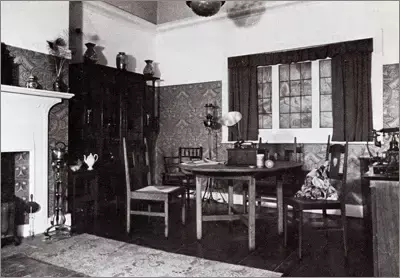 Caption: The cheerful and light interiors of an Edwardian room.
Caption: The cheerful and light interiors of an Edwardian room.
From Dark to Floral: The Evolution of Edwardian Decor
In terms of decor, the flooring of an Edwardian room was composed of highly polished wood blocks accompanied by oriental rugs. Flowers and floral patterns played a significant role in decorating houses, with floral wallpapers and paintings adorning the walls. Wallpapers featured floral patterns of roses, lilacs, and other bright flowers. Embossed wallpapers, known as Lincrusta, were also widely used, adding a touch of elegance with their spectacular Art Nouveau designs. Pastel colors gained popularity in this era, giving a softer touch to the overall color schemes. Living rooms were often darker in color compared to other rooms.
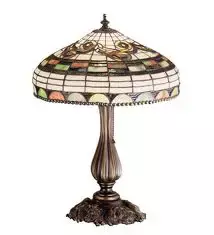 Caption: Edwardian interiors showcased intricate floral patterns and pastel color schemes.
Caption: Edwardian interiors showcased intricate floral patterns and pastel color schemes.
Lighting and Windows: Setting the Mood and Enhancing Elegance
With the introduction of electricity in wealthier households, lighting in the form of wall lights and table lamps became popular, enhancing the visual appeal of the rooms. The central lighting was usually achieved through smoked glass fixtures fitted on the ceilings. Windows in this era were adorned with hanging laces and floral curtains, complementing the overall color scheme of the walls. Simple roller blinds were also used as window coverings in Edwardian interiors.
 Caption: Edwardian windows featured hanging laces and floral curtains.
Caption: Edwardian windows featured hanging laces and floral curtains.
Furniture: Combining Durability and Elegance
Edwardian furniture was designed with an emphasis on durability, keeping the designs simple yet elegant. The use of bamboo, wicker, and mahogany gave the furniture a timeless appeal. Living rooms were often painted in darker shades compared to other rooms, adding a touch of warmth. The Art Nouveau design, characterized by bolder figures of humans and organic elements, was a popular choice for Edwardian furniture. The curtains in these rooms also featured bright floral designs.
 Caption: Edwardian furniture showcased elegance and durability.
Caption: Edwardian furniture showcased elegance and durability.
Edwardian Paint Colors: A Breath of Fresh Air
The choice of colors in the Edwardian era was influenced by various factors. The advent of important movements like Art Nouveau and the influence of Oriental concepts brought about a fresh color palette. The development of printing and paint technologies also contributed to the emergence of new wallpaper and color schemes. There was an intense interest in healthy living and the importance of fresh air and sunlight, which led to a preference for lighter shades. Electric lighting replaced gas lamps, giving freedom in choosing paint colors. Edwardian paint colors included lighter, softer palettes like olive green, sage green, pale blue, and lavender. These colors, along with their corresponding paint schemes, were complemented by new motifs in tiles and wallpapers, featuring flowing lines and stylized floral patterns.
 Caption: Edwardian paint colors incorporated pastel shades and soft palettes.
Caption: Edwardian paint colors incorporated pastel shades and soft palettes.
Illuminating Elegance: Edwardian Era Lamps
The discovery of electricity revolutionized lighting during the Edwardian era. Fabric lampshades in bright and light colors replaced the dark and heavy ones of the past. Frills and tassels added a touch of elegance to these lampshades. Special lamps called pod lights, composed of glass pods hung by brass fittings, were a unique addition to Edwardian interiors. Hanging lights, often made of brass or silverware, provided central lighting in many households. Tiffany lamps, featuring female bronze figures, were particularly popular. Brass and silver were the preferred materials for these lampshades.
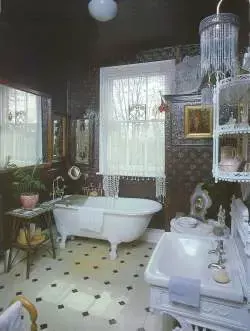 Caption: Edwardian lamps added a touch of elegance to interiors.
Caption: Edwardian lamps added a touch of elegance to interiors.
Edwardian China & Crockery: A Blend of Elegance and Simplicity
While silverware was preferred by the elite, Edwardian China gained popularity as well. The era saw the production of quality china with simple yet captivating designs. Light colors and catchy patterns characterized Edwardian China. The Art Nouveau movement influenced the designs, focusing on natural elements like flowers, plants, and human lives. Painting and carvings in this style adorned lamps and china. Many exquisite examples of Edwardian china can still be found in museums and antique stores across England.
Edwardian Fireplaces: A Cozy Corner for Elegance
Edwardian fireplaces were built with cast iron frames, adorned with tiles on all sides. Wooden mantelpieces added an extra touch of beauty. The Edwardian era witnessed the emergence of various fireplace styles, including the popular Art Nouveau style, glazed brick fireplaces, and tile fireplaces. Glazed bricks and tiles were preferred for their heat resistance, and wooden fireplaces made of mahogany, walnut, and oak added a rustic and warm touch to households. The Art and Crafts style combined brick, wood, and tiles, allowing natural materials to create a cozy ambiance.
 Caption: Edwardian fireplaces showcased elegance and warmth.
Caption: Edwardian fireplaces showcased elegance and warmth.
An Era of Elegance: The Edwardian Bath
Edwardian baths, with their traditional style, have seen a resurgence in popularity in recent times. While primarily suited for houses rather than apartments, the traditional style of Edwardian baths continues to captivate many. Slipper baths and roll-top baths are popular choices, with dark and polished flooring adding to the appeal. Faucets can be free-standing or well-mounted, in line with the Edwardian traditional style. The sanitary ware features bold and masculine angles, with curved edges and deep ridges.
 Caption: Edwardian baths exude elegance and charm.
Caption: Edwardian baths exude elegance and charm.
Timeless Elegance: Edwardian Era Bookcases
Bookcases became popular with the advent of the printing press, and in the Edwardian era, they became more accessible to the general population. Made primarily of mahogany wood, Edwardian bookcases were known for their durability. A typical example is the revolving bookcase, often inlaid with Parquetry or boxwood. These bookcases featured round bases, capital, and drip pans, with rivet detailing adding to their charm. Adjustable shelves and glazing bars were also incorporated in some unique designs.
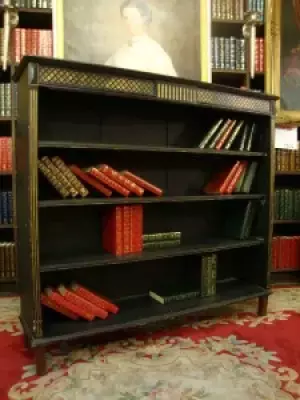 Caption: Edwardian bookcases showcased elegance and durability.
Caption: Edwardian bookcases showcased elegance and durability.
A Touch of Luxury: Edwardian Era Sofas
Sofas, known by various names like couches, settees, and chesterfields, were an integral part of Edwardian interiors. These pieces of furniture provided comfort and elegance to both men and women. Made primarily of mahogany wood, the frames were sturdy and reliable. The seats, backs, and arms were well-padded with high-quality material, ensuring maximum comfort. Cotton or soft-grain leather enveloped the sofas, with a range of colors to suit different preferences.
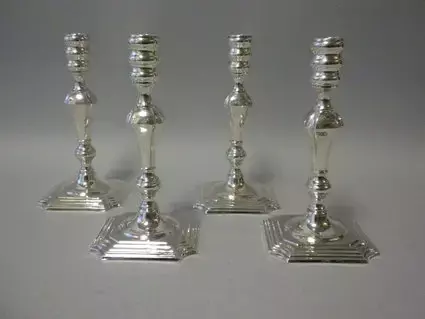 Caption: Edwardian sofas offered both comfort and elegance.
Caption: Edwardian sofas offered both comfort and elegance.
The Allure of Silver: Edwardian Era Candlesticks
Silver candlesticks were highly prized possessions in the Victorian and Edwardian eras. Although the advent of electricity diminished their practical use, they remained popular for their decorative value. Edwardian silver candlesticks were characterized by their elegant designs, featuring round bases, capital, and drip pans. Art and craft styles showcased reed borders and removable sconces, adding a touch of sophistication. These candlesticks embraced simplicity, doing away with complex carvings or intense linings and borders.
 Caption: Edwardian silver candlesticks added elegance and charm to interiors.
Caption: Edwardian silver candlesticks added elegance and charm to interiors.
Styling and Grace: Edwardian Era Vanity
Edwardian vanity played a crucial role in the era of modern fashion. Vanity became an important piece of furniture for both men and women to style themselves. Cherry veneers and birch solids were commonly used for Edwardian vanity. Shaped tops, carved pilasters, and curved doors and drawer fronts added to the elegance. Handcrafted vanities, made with Prima vera veneers and natural highlights, became unique works of art.
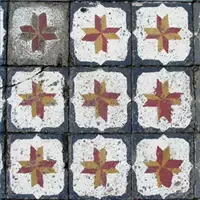 Caption: Edwardian vanity showcased elegance and functionality.
Caption: Edwardian vanity showcased elegance and functionality.
Flooring That Dazzles: Edwardian Era Tile Flooring
Edwardian floors showcased a wide variety of materials and patterns. Tiles were a significant discovery, solving numerous flooring problems with their availability in various shades. Tile industry advancements in the 19th century led to the emergence of Edwardian tile flooring, known for its plain colors and bright pastels. Bullnose tiles and adaptations of Italian terrazzo were popular choices. Wooden floors featured highly polished wood blocks, often made of oak, while areas exposed to wear and tear were made of bricks in a herringbone pattern. Red quarry tiles added a touch of sophistication to Edwardian homes.
 Caption: Edwardian tile flooring exhibited elegance and varied patterns.
Caption: Edwardian tile flooring exhibited elegance and varied patterns.
Storing Elegance: Edwardian Era Wardrobes and Cabinets
Edwardian wardrobes and cabinets served both as storage units and decorative pieces. Made primarily of mahogany wood, these handcrafted furniture pieces featured elegant designs with intricate detailing. Interior shelves and brass handles provided convenience for storing and hanging garments. Edwardian wardrobes were seen as a work of art, showcasing the craftsmanship of skilled architects.
 Caption: Edwardian wardrobes combined elegance and functionality.
Caption: Edwardian wardrobes combined elegance and functionality.
A Whimsical Touch: Edwardian Era Wallpapers
Edwardian wallpapers brought a breath of fresh air to the design world, breaking away from the traditional Victorian patterns. Bright shades of light colors and pastel hues became the norm, giving a cheerful and vibrant look to interiors. Floral patterns, inspired by the Art Nouveau movement, adorned walls, showcasing the beauty of flowers like roses and lilacs. Lincrusta, a type of embossed wallpaper, added texture and elegance with its Art Nouveau designs.
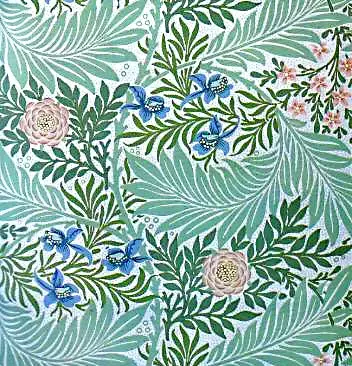 Caption: Edwardian wallpapers brought vibrancy and elegance to interiors.
Caption: Edwardian wallpapers brought vibrancy and elegance to interiors.
Reflecting Elegance: Edwardian Era Glass Mirrors
Glass mirrors gained popularity during the Edwardian era, thanks to the advancements in glass-making technology. Stained glass, popular in churches and important buildings, added color and charm. Plate glass mirrors, once a luxury, became more affordable and adorned mantelpieces above fireplaces. The Edwardian era witnessed the use of brighter pastels and simple designs in glass mirrors.
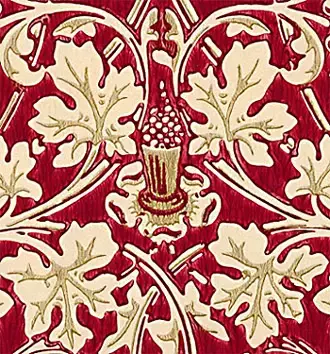 Caption: Edwardian glass mirrors added a touch of elegance and sophistication.
Caption: Edwardian glass mirrors added a touch of elegance and sophistication.
Rediscovering the Enchantment of the Edwardian Era
The Edwardian era brought about a revolution in art, fashion, and interior design. The era embraced fresh ideas, informal elegance, and simplicity. The transition from dark shades to bright pastels, intricate designs to simpler patterns, and formal to informal fashion and art marked a departure from the Victorian era. Edwardian interiors showcased light and cheerful colors, elegant furniture, and a touch of luxury. The era's influence can still be seen in modern design trends, reminding us of the enduring charm and elegance of the Edwardian era.

















